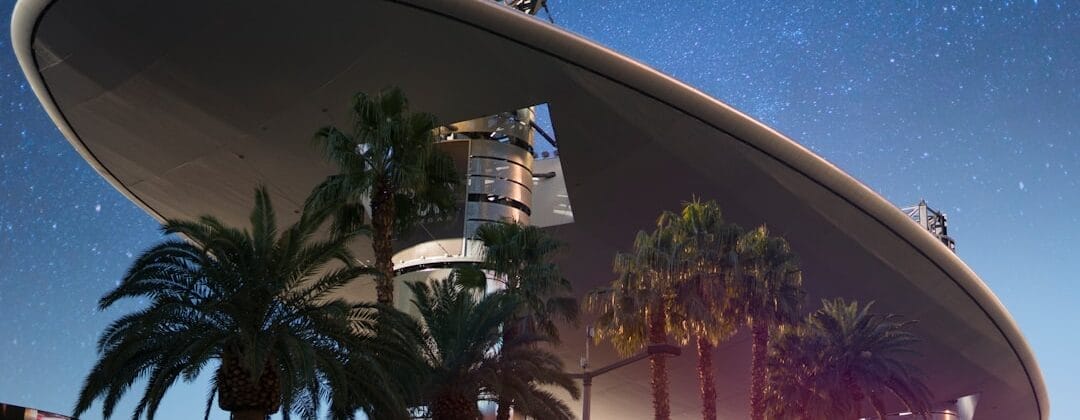Blog
Unlocking the Latest Fashion Trends: Your Ultimate Style Guide 1. Fashion 2. Style 3. Trends 4. Clothing 5. Accessories 6. Runway 7. Designer 8. Couture 9. Street style 10. Fashion week 11. Beauty 12. Makeup 13. Hair 14. Fashion portal 15. Fashion blog 16. Fashion influencer 17. Fashionista 18. Wardrobe 19. Shopping 20. Online shopping 21. Fashion industry 22. Fashion news 23. Fashion tips 24. Fashion advice 25. Fashion forward 26. Fashion inspiration 27. Fashion trends 28. Fashion brands 29. Fashion market 30. Fashion culture
The Evolution of Technology: A Trip Through Time The story of technology’s evolution is an intriguing one, documenting the unrelenting quest for innovation and advancement by humanity. From our prehistoric ancestors’ crude implements to today’s advanced electronic gadgets, technology has played a pivotal role in forming economies, societies, & cultures. This journey is more than just a list of inventions; it also captures the shifting demands, goals, and difficulties that people have faced throughout history. We will look at significant turning points that have characterized technological development as we delve deeper into this evolution and consider how these developments have changed our day-to-day existence.
Key Takeaways
- Clear communication is essential in setting boundaries and managing expectations.
- It’s okay to say no and prioritize your own well-being.
- Setting boundaries is a form of self-care and self-respect.
- Learning to say no can lead to healthier relationships and reduced stress.
- Practice assertiveness and be firm but respectful when declining a request.
An understanding of the relationship between human creativity and the environment is also necessary to comprehend how technology has evolved. In response to particular societal demands or challenges, each technological advancement has arisen, frequently with unanticipated consequences. For example, the development of the wheel transformed trade and transportation, but it also opened the door for resource-related disputes and intricate social structures. As we go through the ages, we will discover how technology has not only made progress easier but also presented moral conundrums and environmental issues that still affect us today.
Early Technology’s Development. When early humans first started making tools out of stone, wood, and bone in the prehistoric era, technology took its first forms. Our ancestors needed these rudimentary tools to hunt, gather, & defend themselves from predators in order to survive. An important turning point in human evolution was the development of tools, which made it possible to acquire food more effectively and eventually resulted in the formation of permanent communities. The Effects of Fire on Early Societies.
Another significant accomplishment of this era was the mastery of fire, which facilitated cooking, warmth, and protection, all of which enhanced health and nutrition. These prehistoric societies’ technological capacities developed along with them. A radical change from nomadic to settled farming communities was brought about by the invention of agriculture around 10,000 BCE.
| Category | Description |
|---|---|
| Fashion | The latest clothing and accessory trends |
| Style | Personal expression through clothing and accessories |
| Trends | Current popular styles in fashion |
| Clothing | Garments and attire for different occasions |
| Accessories | Items such as jewelry, handbags, and shoes to complement outfits |
| Runway | Platform for designers to showcase their latest collections |
| Designer | Individual or company creating unique fashion pieces |
| Couture | High-end, custom-made fashion designs |
| Street style | Fashion influenced by urban culture and everyday people |
| Fashion week | Event where designers present their new collections |
| Beauty | Enhancing one’s appearance through makeup and skincare |
| Makeup | Products used to enhance facial features |
| Hair | Styling and care of hair for different looks |
| Fashion portal | Online platform for fashion-related content and resources |
| Fashion blog | Personal or professional website featuring fashion-related articles and images |
| Fashion influencer | Individual with a large following who influences fashion choices |
| Fashionista | A person with a strong interest in fashion and current trends |
| Wardrobe | Collection of clothing and accessories owned by an individual |
| Shopping | Purchasing goods, including clothing and accessories |
| Online shopping | Purchasing goods through internet-based retailers |
| Fashion industry | Businesses and individuals involved in the design, production, and marketing of fashion |
| Fashion news | Updates and information about the fashion world |
| Fashion tips | Advice and suggestions for creating stylish looks |
| Fashion advice | Guidance on fashion choices and styling |
| Fashion forward | Being ahead of current fashion trends |
| Fashion inspiration | Ideas and influences for creating fashion looks |
| Fashion trends | Current and popular styles in clothing and accessories |
| Fashion brands | Companies producing and selling fashion items |
| Fashion market | Industry and consumer demand for fashion products |
| Fashion culture | The social and cultural aspects of fashion |
the development of sophisticated societies and advances in technology. In addition to increasing food production, this shift promoted population expansion and the development of intricate social structures. This period’s technological progress was further demonstrated by the development of weaving and pottery, which improved daily living and promoted trade. Future civilizations & their technological endeavors were made possible by the foundations established during this time. Technology started to advance in previously unheard-of ways as ancient civilizations like Mesopotamia, Egypt, India, and China rose to prominence.
Monumental architecture, like the pyramids of Egypt and the ziggurats of Mesopotamia, was built using sophisticated engineering methods that called for careful planning and organization in addition to skilled labor. The values and beliefs of their respective societies were reflected in these structures, which were not only utilitarian but also symbolic of authority and religious significance. The capacity to work with materials like clay and stone showed a deep comprehension of engineering and physics concepts.
Ancient societies achieved great advancements in a number of disciplines, including metallurgy, mathematics, and astronomy, in addition to creating magnificent buildings. Writing systems made it possible to administer sophisticated societies and record knowledge. In agricultural societies, the creation of irrigation systems served as an example of how technology could be used to improve output & efficiently manage resources.
The foundation for subsequent scientific research and technological developments was established by these inventions, demonstrating how ancient societies were both independent innovators & technology consumers. Ironically, despite being perceived as a period of stagnation in Europe, the Middle Ages saw significant technological advancement across a wide range of cultures. Other areas, such as the Islamic Golden Age, witnessed incredible advances in science and technology, while Europe faced difficulties like invasions and plagues. In disciplines like mathematics, medicine, & engineering, Islamic scholars made important contributions while preserving and advancing ancient knowledge. This period set the stage for later scientific revolutions, such as the development of algebra and improvements in optics. The emergence of the agricultural revolution in Europe in the latter half of the Middle Ages marked a revival in technological advancement.
Urbanization and population growth were caused by the substantial increase in agricultural productivity brought about by innovations like the heavy plow and crop rotation techniques. During this period, engineering also made significant strides with the development of windmills and mechanical clocks. By enhancing daily living and fostering trade and commerce, these technologies helped pave the way for the Renaissance, a time that would further spur human ingenuity and creativity. A resurgence of interest in science, art, and exploration was signaled by the Renaissance, a significant historical period.
This cultural shift created an atmosphere that encouraged research and experimentation, which resulted in ground-breaking findings that influenced the contemporary world. The spirit of this time was best represented by individuals like Leonardo da Vinci, whose contributions covered a wide range of fields, including anatomy, engineering, and art. By democratizing knowledge and promoting literacy among larger societal segments, Johannes Gutenberg’s invention of the printing press transformed communication by making literature more widely available. Not only did communication improve during the Renaissance, but navigation technology also advanced significantly. Explorers like Christopher Columbus & Vasco da Gama were able to set out on expeditions that would broaden international trade networks and cross-cultural interactions thanks to the development of more precise maps & navigational tools like the astrolabe.
The scientific method began to move toward empirical observation and experimentation during this time, setting the stage for later scientific revolutions. The Renaissance changed how people interacted with technology and was more than just a return to classical knowledge. innovations in technology and a new era of manufacturing. Transportation and manufacturing processes were transformed by inventions like the steam engine, which allowed for previously unheard-of levels of mass production. As factories developed into hubs of production, people moved quickly to cities in pursuit of employment, which accelerated urbanization.
Social Repercussions and Difficulties. Significant societal changes were brought about by this transition, including adjustments to living & working conditions. But there was a negative aspect to the Industrial Revolution as well.
It resulted in environmental degradation, child labor exploitation, & unfavorable factory working conditions. long-lasting effects on contemporary society. The Industrial Revolution created consumption patterns that still have an impact on society today and set the groundwork for contemporary economies in spite of these obstacles.
Due to the glaring disparities between social classes brought about by the rise of industrial capitalism, movements calling for social reforms and workers’ rights were born. The 20th century saw an unparalleled surge in technological development that revolutionized almost every facet of human existence. This century was characterized by fast innovation that changed communication, transportation, healthcare, & entertainment, starting with Alexander Graham Bell’s invention of the telephone and continuing with the creation of computers and the internet. Cars transformed individual mobility, & airplanes reduced international distances, promoting globalization like never before.
These developments brought people together across great geographic distances and improved convenience. Also, the 20th century was marked by important medical advances that significantly enhanced the state of public health. The development of vaccines to prevent diseases like measles and polio has raised life expectancy all over the world. Numerous lives were saved when antibiotics were discovered, revolutionizing the way bacterial infections were treated. The development of nuclear weapons during World War I, however, also brought up ethical concerns about the use of technology in combat. As the twenty-first century dawns, we are enmeshed in the digital age, which is marked by a level of connectedness never before possible thanks to information technology breakthroughs.
Globally, the widespread use of smartphones has changed the way we interact, communicate, and access information. Because they allow people to connect across borders, social media platforms have redefined social dynamics. However, they also raise concerns about misinformation and privacy. Data is produced at an incredible rate in this era of information revolution, impacting everything from political discourse to business practices. One of the most revolutionary technologies of our day is artificial intelligence (AI).
Artificial Intelligence (AI) is changing industries and upending conventional ideas of work, from the machine learning algorithms that drive recommendation systems to the driverless cars that are set to reform transportation. But there are also moral concerns about algorithmic bias, data privacy, and job displacement brought up by this quick development. It is essential to take into account both the advantages & the effects of these technologies on society at large as we traverse this digital terrain. Technological development is a complex tapestry made from environmental factors, societal demands, & human ingenuity. Each era has made a distinct contribution to our understanding of what technology is capable of, from the tools used in prehistoric times to the digital advancements that shape our modern lives. As we approach new developments like biotechnology & quantum computing, it is crucial to take stock of our history while plotting our course for the future.
In conclusion, technology has unquestionably advanced humankind, but it has also brought about certain difficulties that need to be carefully considered. We must continue to be aware of the ethical ramifications of our innovations and frontier explorations and work to strike a balance between responsibility & advancement. Knowing our technological history will ultimately enable us to wisely and preemptively navigate an uncertain future.
In exploring the latest trends and tools in digital marketing for fashion portals, it’s essential to consider how notification systems can enhance user engagement. An interesting read on this topic can be found in an article discussing the use of Notification Box to display banner ads, which is particularly relevant for fashion websites looking to promote new collections or sales effectively. You can read more about it here: Using Notification Box to Display Banner Ads.
1. Fashion trends 2023
2. Sustainable fashion
3. Digital marketing for fashion
4. Online fashion advertising
5. E-commerce strategies
6. Social media influencers
7. Fashion week highlights
8. Celebrity fashion lines
9. Virtual fitting rooms
10. AI in fashion
11. Mobile shopping trends
12. User-generated content
13. Fashion blogging tips
14. Email marketing for fashion
15. SEO for fashion websites
16. Fashion photography
17. Ethical fashion brands
18. Fashion design software
19. Online fashion education
20. Fashion industry analytics
21. Customer loyalty programs
22. Fashion app reviews
23. Fashion marketplace
24. Fashion event promotions
25. Personal styling services online
26. Fashion affiliate marketing
27. Influencer collaboration strategies
28. Fashion brand case studies
29. Fashion retail innovations
30. Cross-platform marketing for fashion
FAQs
What is a fashion portal?
A fashion portal is a website or online platform that provides information, news, and resources related to the fashion industry, including trends, designers, brands, and shopping options.
What can I find on a fashion portal?
On a fashion portal, you can find articles, interviews, reviews, and features on fashion trends, style tips, beauty, fashion events, designer profiles, and shopping guides.
How can a fashion portal help me stay updated on fashion trends?
A fashion portal can help you stay updated on fashion trends by providing regular updates on the latest styles, colors, patterns, and silhouettes, as well as insights from industry experts and influencers.
Can I shop for fashion items on a fashion portal?
Many fashion portals offer a shopping section where users can browse and purchase clothing, accessories, and beauty products from a curated selection of brands and retailers.
Are there fashion portals that cater to specific demographics or interests?
Yes, there are fashion portals that cater to specific demographics or interests, such as sustainable fashion, plus-size fashion, menswear, streetwear, luxury fashion, and more.
How can I contribute to a fashion portal?
You can contribute to a fashion portal by submitting articles, fashion editorials, fashion photography, or other relevant content, depending on the portal’s submission guidelines.
Are there fashion portals that focus on ethical and sustainable fashion?
Yes, there are fashion portals that focus on ethical and sustainable fashion, providing information and resources on eco-friendly and socially responsible clothing and accessories.
Can I find career opportunities in the fashion industry on a fashion portal?
Some fashion portals may feature job listings, internships, and career resources for those interested in pursuing a career in fashion, including positions in design, marketing, merchandising, and more.
Do fashion portals cover fashion events and runway shows?
Many fashion portals cover fashion events and runway shows, providing coverage, reviews, and highlights from major fashion weeks, designer presentations, and industry events around the world.
How can I use a fashion portal to enhance my personal style?
You can use a fashion portal to enhance your personal style by exploring style guides, outfit inspiration, and fashion advice, as well as learning about different fashion aesthetics and trends.
Are there fashion portals that offer virtual styling services?
Some fashion portals may offer virtual styling services, where users can receive personalized style recommendations, wardrobe consultations, and fashion advice from professional stylists.
Can I find information on fashion history and cultural influences on a fashion portal?
Many fashion portals include articles and features on fashion history, cultural influences, and the evolution of style, providing insights into the impact of art, music, and society on fashion.
Do fashion portals provide information on fashion technology and innovation?
Some fashion portals cover fashion technology and innovation, including advancements in sustainable materials, wearable tech, digital fashion experiences, and the intersection of fashion and tech.
How can I use a fashion portal to discover new fashion brands and designers?
You can use a fashion portal to discover new fashion brands and designers by exploring designer profiles, brand spotlights, and emerging talent features, as well as curated shopping selections.
Are there fashion portals that focus on global fashion and diverse cultural perspectives?
Yes, there are fashion portals that focus on global fashion and diverse cultural perspectives, showcasing fashion from different regions, traditions, and communities around the world.
Can I find fashion industry news and analysis on a fashion portal?
Many fashion portals provide news coverage and analysis of the fashion industry, including business updates, market trends, industry reports, and insights from fashion experts and insiders.
Do fashion portals offer resources for aspiring fashion professionals and entrepreneurs?
Some fashion portals offer resources for aspiring fashion professionals and entrepreneurs, including educational content, business tips, industry insights, and success stories from fashion industry leaders.
How can I use a fashion portal to connect with other fashion enthusiasts and professionals?
You can use a fashion portal to connect with other fashion enthusiasts and professionals by participating in online communities, forums, and social media groups, as well as attending virtual events and networking opportunities.
Are there fashion portals that focus on inclusive and diverse representation in fashion?
Yes, there are fashion portals that focus on inclusive and diverse representation in fashion, promoting diversity in modeling, fashion media, and industry practices.
Can I find fashion-related podcasts and video content on a fashion portal?
Some fashion portals offer fashion-related podcasts and video content, featuring interviews, discussions, tutorials, and behind-the-scenes looks at the fashion industry and creative process.
Do fashion portals offer resources for fashion students and educators?
Some fashion portals offer resources for fashion students and educators, including educational articles, career advice, industry insights, and opportunities for collaboration and learning.
How can I use a fashion portal to stay informed about fashion law and intellectual property rights?
You can use a fashion portal to stay informed about fashion law and intellectual property rights by accessing legal resources, articles on copyright and trademark issues, and updates on industry regulations.
Are there fashion portals that focus on vintage and retro fashion?
Yes, there are fashion portals that focus on vintage and retro fashion, providing information on vintage shopping, styling tips, historical fashion eras, and the enduring appeal of vintage style.
Can I find fashion-related travel and lifestyle content on a fashion portal?
Some fashion portals include fashion-related travel and lifestyle content, featuring destination guides, fashion travel tips, and insights into the intersection of fashion, culture, and lifestyle experiences.
Do fashion portals offer resources for fashion bloggers and influencers?
Some fashion portals offer resources for fashion bloggers and influencers, including tips for content creation, social media strategies, brand collaborations, and monetization opportunities.
BUY NOW
-
Sale!

Agency License – Notification Box – WordPress Plugin
Original price was: $230.00.$150.00Current price is: $150.00. Add to cart -
Sale!

Unlimited License – Notification Box Pro – WordPress Plugin
Original price was: $79.00.$60.00Current price is: $60.00. Add to cart -

Single License – Notification Box Pro – WordPress Plugin
$39.00 Add to cart







